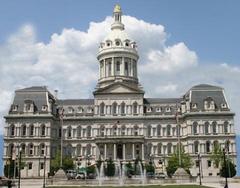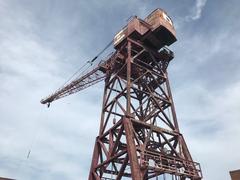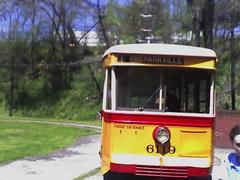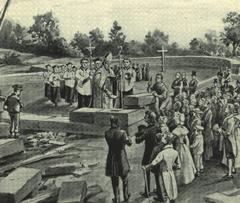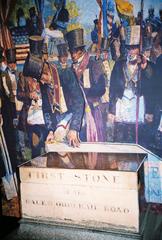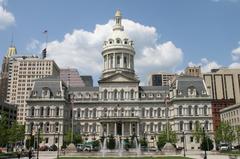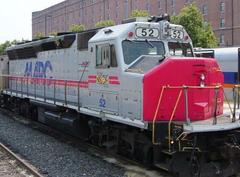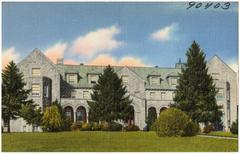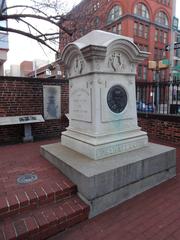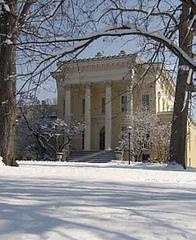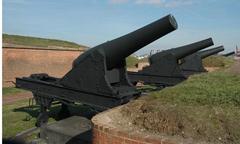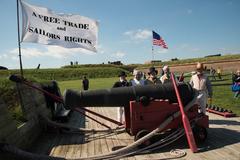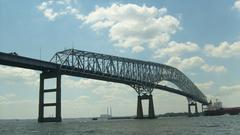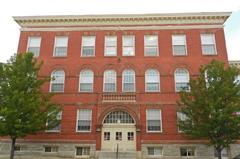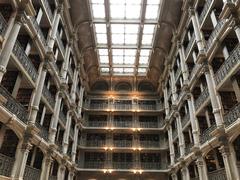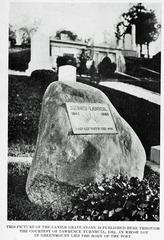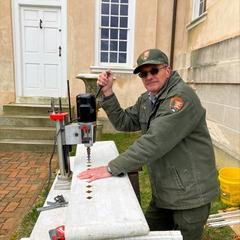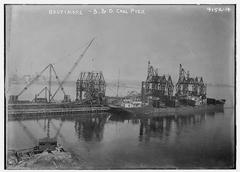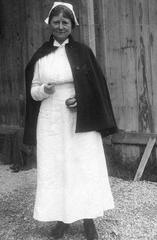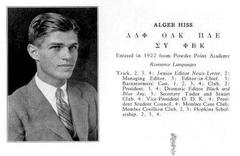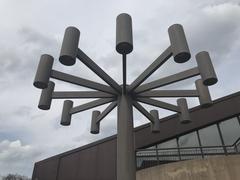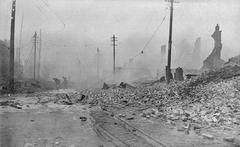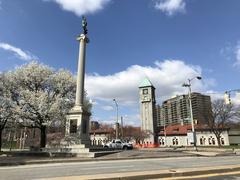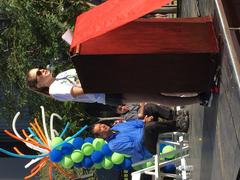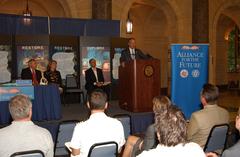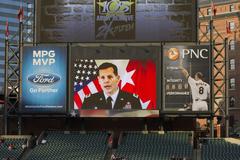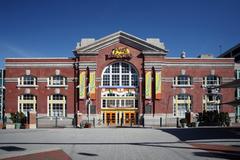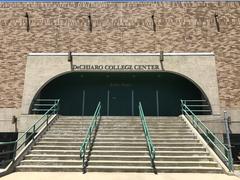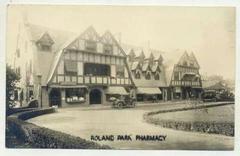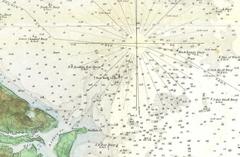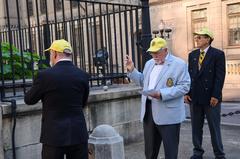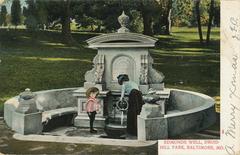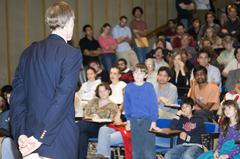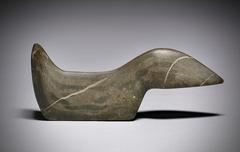
Homewood Campus Baltimore Visiting Hours, Tickets, and Historical Sites Guide
Date: 03/07/2025
Introduction
Visiting Johns Hopkins University’s Homewood Campus in Baltimore, Maryland, offers a unique experience that blends deep historical roots, iconic Federal-style architecture, academic excellence, and a vibrant cultural scene. Once the early 19th-century Homewood Estate, the campus today serves as the academic and administrative heart of one of America’s premier research universities, beautifully integrated into the surrounding neighborhoods of Charles Village, Guilford, and Roland Park (Wikipedia; Museums at JHU).
This guide provides detailed information on Homewood Campus visiting hours, ticketing, tours, accessibility, key landmarks, museums, dining, transportation, and practical tips—ensuring a meaningful and well-prepared visit for history lovers, prospective students, and cultural explorers alike.
Table of Contents
- Introduction
- Origins and Early History
- Architectural Significance
- Evolution as a Landmark
- Visiting the Homewood Campus: Hours, Tickets, and Tours
- Role in the Local and Academic Community
- Preservation and Continued Relevance
- Exploring the Homewood Campus: Visiting Hours, Tickets, and Must-See Baltimore Historical Sites
- Campus Access and Orientation
- Frequently Asked Questions (FAQ)
- Visuals and Media
- Plan Your Visit & Final Tips
- References
Origins and Early History
Homewood Campus stands on land originally developed as the Homewood Estate between 1801 and 1803 by Charles Carroll, Jr., son of a Declaration of Independence signer (Wikipedia). Built in the Federal and Palladian styles, the Homewood House became a landmark of early American architecture and Baltimore elite society.
In the early 20th century, Johns Hopkins University, seeking more space for its expanding programs, moved from downtown Baltimore to the Homewood Estate and the adjacent Wyman Villa. This relocation embedded the university within Baltimore’s northern neighborhoods and set the stage for the campus’s ongoing growth and impact (Wikipedia).
Architectural Significance
Homewood’s architecture is defined by cohesive red brick facades and white marble trim, echoing the original Homewood House’s Federal style (Wikipedia). The campus is organized around landscaped quadrangles, with Gilman Hall—featuring its signature clock tower—at the center.
Notable structures include:
- Homewood House Museum: Preserved as a museum and National Historic Landmark, showcasing period interiors and the estate’s history (Museums at JHU).
- Milton S. Eisenhower Library: The main library and campus hub, inaugurated in 1964 (Wikipedia).
- Nichols House: The university president’s residence, built in Georgian style in 1958.
The campus’s architectural integrity is carefully maintained, blending historic preservation with modern educational facilities.
Evolution as a Landmark
Homewood has evolved through several major renovations, notably the 2000–2002 transformation, which prioritized pedestrian spaces, replaced vehicle roads with brick walkways, and added extensive landscaping (Wikipedia). The campus expanded with new academic and recreational buildings, such as Clark Hall, Hodson Hall, the Mattin Center, and the Ralph S. O’Connor Recreation Center.
Charles Commons, a major development across North Charles Street, provides student housing, dining, and a bookstore, further integrating the campus with its urban surroundings. The campus also enjoys a close relationship with the Baltimore Museum of Art, enhancing its cultural significance (Wikipedia).
Visiting the Homewood Campus: Hours, Tickets, and Tours
Homewood Museum
- Hours: Tuesday–Sunday, 11:00 AM–4:00 PM (closed Mondays)
- Tickets: $12/adults, $10/seniors, students, military; free for JHU students/staff and children under 6
- Tours: Docent-led tours available; self-guided tours with museum admission (Museums at JHU)
- Accessibility: Wheelchair access and accommodations available; contact ahead for special requests
Evergreen Museum & Library
- Hours: Thursday–Sunday, 12:00 PM–4:00 PM
- Tickets: $10/adults, $8/seniors and students; free for JHU affiliates
General Campus Access
- Hours: Open daily, dawn to dusk (most buildings 8:00 AM–10:00 PM)
- Tours: Guided campus tours available via Undergraduate Admissions (apply.jhu.edu); self-guided tours encouraged with maps from Mason Hall
Visitor Tips
- Parking: South Garage (9 E. 33rd St.), museum lot (limited), and nearby street parking
- Public Transit: City bus routes, Baltimore Collegetown Shuttle, and proximity to Penn Station
- Best Times: Weekdays outside major university events provide quieter visits
- Check for Special Events: Visit the official museums’ site for updates
Role in the Local and Academic Community
Homewood is Baltimore’s academic and cultural anchor. Beyond its educational mission, the campus fosters community partnerships such as the Experience Corps Baltimore City Program, which recruits volunteers to mentor local elementary students (PMC Article). The campus provides green space, supports area businesses, and houses museums that interpret Baltimore and American history from 1800 to 1950 (Museums at JHU).
Preservation and Continued Relevance
Johns Hopkins University’s commitment to preserving Homewood House and maintaining the campus’s historic architecture ensures that Homewood serves as both a living monument to Baltimore’s past and a forward-looking center for research and innovation (Museums at JHU). Ongoing developments, including the Hopkins Student Center, continue to enhance its role as a dynamic educational and cultural hub (hub.jhu.edu).
Exploring the Homewood Campus: Visiting Hours, Tickets, and Must-See Historical Sites
Key Architectural Landmarks
- Gilman Hall & Clock Tower: Campus centerpiece, home to humanities departments, with public tours available (Homewood Campus Overview).
- Milton S. Eisenhower Library: Main library with unique underground levels (JHU Libraries).
- Shriver Hall: Major concert and lecture venue (Shriver Hall Concert Series).
Outdoor Spaces
- The Beach: Grassy quad popular for relaxation and student events
- Wyman Quad: Photogenic green space, especially in spring
- Decker Garden: Tranquil spot with seasonal landscaping
Museums and Culture
- Homewood Museum: Federal-era mansion with rotating exhibits (Museums at JHU)
- Johns Hopkins Archaeological Museum: Ancient artifacts inside Gilman Hall (Archaeological Museum)
Athletics and Recreation
- Ralph S. O’Connor Recreation Center: Fitness and recreation facilities (JHU Recreation)
- Homewood Field: Historic lacrosse stadium (JHU Athletics)
Dining and Social Hubs
- Charles Street Eateries: National chains and local favorites outside campus gates
- Levering Hall & The LaB: Central dining and gathering spaces
Art and Academic Spaces
- Decker Quadrangle Sculptures: Public art installations throughout campus
- Mattin Center: Arts studios and performance venues
Campus Access and Orientation
Address: 3400 North Charles Street, Baltimore, MD 21218
Getting There: Accessible by car, public transit, and rideshare; Penn Station nearby; BWI Airport ~20 miles away (ei.jhu.edu)
Guided and Self-Guided Tours
- Admissions Tours: Most weekdays and select Saturdays; advance registration required (apply.jhu.edu)
- Virtual Tours: Immersive online experience for remote visitors
- Self-Guided: Maps available online and at Mason Hall
Accessibility
- Wheelchair-accessible pathways and buildings
- Contact Admissions or museums for special accommodations
Frequently Asked Questions (FAQ)
Q: Are guided tours available?
A: Yes, guided tours through Admissions and the Homewood Museum are available. Self-guided tours are also encouraged.
Q: What are the Homewood Museum’s hours and ticket prices?
A: Tuesday–Sunday, 11:00 AM–4:00 PM; $12 adults, $10 seniors/students/military, free for JHU affiliates and children under 6 (Museums at JHU).
Q: Is campus admission free?
A: Yes, outdoor campus access is free; museums and special events may require tickets.
Q: Is the campus accessible for those with disabilities?
A: Yes, accessible paths and facilities are available.
Q: Where can I park?
A: South Garage, museum lot, and street parking; public transit is also available.
Q: What are the best nearby attractions?
A: Baltimore Museum of Art, Charles Village dining, Roland Park shopping.
Q: Are virtual tours available?
A: Yes, online 360-degree tours are available for remote visitors (apply.jhu.edu).
Visuals and Media
- Homewood House Museum (Image alt: “Exterior view of Homewood House Museum on Johns Hopkins Homewood Campus”)
- Homewood Campus Map
- Virtual Tour
Plan Your Visit & Final Tips
- Register for tours and events in advance, especially during peak seasons.
- Check up-to-date visiting hours for museums, libraries, and dining.
- Wear comfortable shoes for exploring the expansive campus.
- Download the Audiala app for interactive maps and event updates.
- Respect campus policies (e.g., smoking, photography).
- Explore nearby neighborhoods for an authentic Baltimore experience.
Stay connected with Johns Hopkins University on social media, and access resources and virtual content through their official websites.
References
- Wikipedia: Homewood Campus of Johns Hopkins University
- Museums at Johns Hopkins University
- Experience Corps Baltimore City Program
- Johns Hopkins University Admissions Tours & Events
- Homewood Museum Visitor Info
- Homewood Campus Overview
- Homewood House Museum
- Shriver Hall Concert Series
- JHU Libraries
- JHU Recreation
- JHU Athletics
- Archaeological Museum
- Hopkins Student Center News
- Engineering Innovation at JHU
Experience the legacy, culture, and innovation of the Homewood Campus—where Baltimore’s past and future meet. Plan your visit today!


